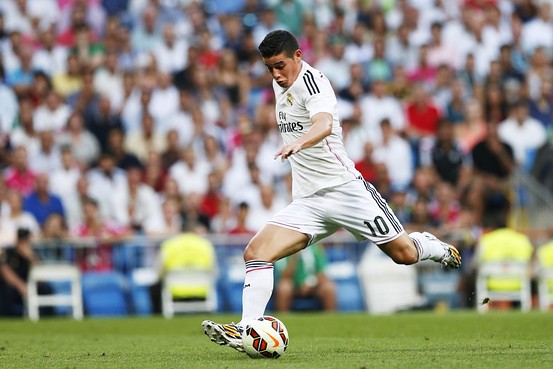Sweden crushed Italy in a World Cup gathering stage amusement, 3-2. Inside a year, seven of the Swedish beginning 11 from that day in São Paulo had moved to Italian clubs.
It’s difficult to exaggerate exactly how separate the universe of soccer was in those days. Household associations were veritable islands, just about totally cut off from whatever is left of the world, especially in the consequence of World War II. Not just was there no outside soccer on TV, in numerous nations there for the most part was no TV either. No European club rivalries.
No global scouting systems. No operators. No chance—past the odd benevolent and the World Cup, making its return after a 12-year break to see and assess outside players.
That is the reason, having seen their national group crushed by the Swedes, Italian clubs attacked the resistance, to a great extent on the quality of reports from Italy players, FA authorities and the sprinkling of writers who made the excursion to Brazil.
It may have boded well in the 1950s, however this business as usual has proceeded through the years. The World Cup is the amusement’s greatest showcase. Do well there and your exchange worth will soar. Fail to meet expectations and the converse is liable to happen. What’s surprising is that it endures right up ’til the present time regardless of the gigantic number of wake up calls.
Whether it was Brazil’s Denilson in 1998—his exchange to Spain’s Betis spoken to a world-record charge at the time—or his compatriot Kleberson, who moved to Manchester United in 2002 or Ghana’s Asamoah Gyan, who joined Sunderland in a club-record move in 2010, this marvel rehashes itself with disturbing consistency at regular intervals.
Rationale would propose that it shouldn’t. Significant clubs have worldwide systems of scouts. Basically every diversion on the planet’s main 50 alliances is on TV some place. Egghead experts parse and assess players measurably. What’s more programming like Wyscout, with its file of more than 60,000 matches, permits anybody to watch the assortment of work of pretty much any player over the past few seasons.
So why are clubs still impacted by what happens in a couple of recreations over the mid year like clockwork? Would they not be better served to nearly track a player about whether? It’s the embodiment of what economists may call silly conduct and confirmation that the exchange business stays wasteful.
You could contend that we’ve seen this wonder again this late spring. James Rodríguez is a 23-year-old Colombian assaulting midfielder. A year back, he moved from Porto to Monaco for a reported €45 million ($59 million), an expense which cocked eyebrows at the time. He had a rough begin in the Principality, just turning into a consistent in October and scoring his first objective in late November, before completing the season firmly.
At that point, he went to the World Cup, where he headed Colombia to the quarterfinals and was the competition’s top objective scorer. Genuine Madrid marked him for €80 million ($105 million), making him the fourth most lavish player ever.
Presently, you can’t demonstrate a negative, so we can’t know beyond any doubt. At the same time it doesn’t appear nonsensical to propose that, without his shining exhibitions in Brazil, he would not have broken the $100 million imprint. You can put forth a comparable defense for the man he replaces in Madrid, Ángel Di María. He had a splendid season at club level for the Spanish club and he was seemingly Argentina’s best entertainer in Brazil.
Anyway its protected to say that six months back or even just in late May—the idea that somebody would pay €75 million ($98.5 million) for his administrations would appear to be outlandish.
This applies further down the natural way of life too. Enner Valencia was a champion entertainer for Ecuador in the World Cup, scoring three objectives in three gathering amusements. Eight months prior, he was a 23-year-old forward at Emelec, in the Ecuadorean alliance, with a hand sized scoop of universal tops. He moved to Mexico’s Pachuca in January and, in late July, West Ham marked him for $20 million.
Then again take Costa Rica’s Giancarlo González. Prior to the World Cup, he was a 26-year-old understudy employing his exchange with the Columbus Crew. In August, after Costa Rica’s solid execution in Brazil, he moved to Italy’s Palermo for $5 million, making him the most lavish protector ever sold by a club in Major League Soccer.
Once more, its most likely not a stretch to propose that each of these four players would have been generously less expensive had they been marked at the end of last season, as opposed to after Brazil 2014.
The contention meets expectations in converse, as well. Milan holder Silvio Berlusconi purportedly whined after Italy’s passageway from the World Cup that the baffling indicating of Mario Balotelli would cost him cash.
He was cited by the Italian media as saying that he had an arrangement lined up to offer him for €35 million ($46 million) however that it was abandoned by the middle forward’s execution in Brazil. It might be a happenstance, yet Balotelli was sold a week ago to Liverpool for €20 million ($26.3 million), an expense which seems notably on the low side.
What this proposes is that, for all the probably investigative techniques used to assess players and the armed forces of scouts sent over the planet, things have just proceeded onward such a great amount since 1950. To numerous clubs, several amusements in June and July like clockwork still wield an outsize impact in deciding a player’s transfer value.

